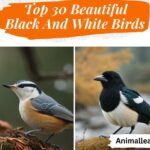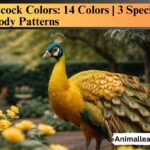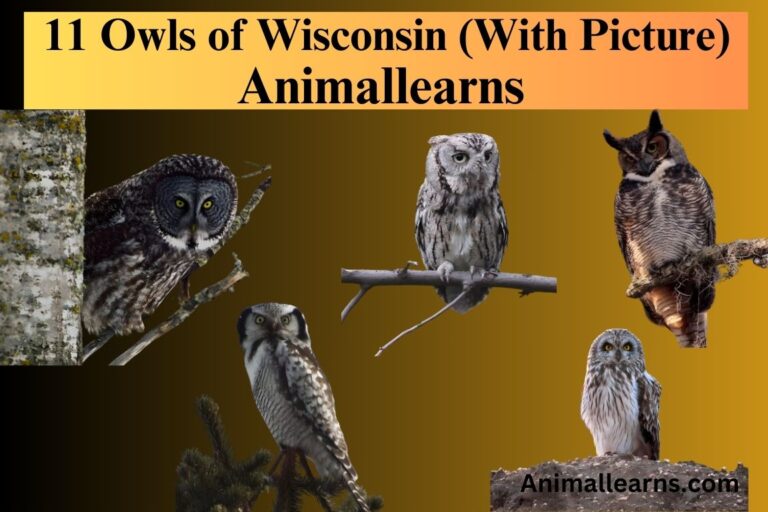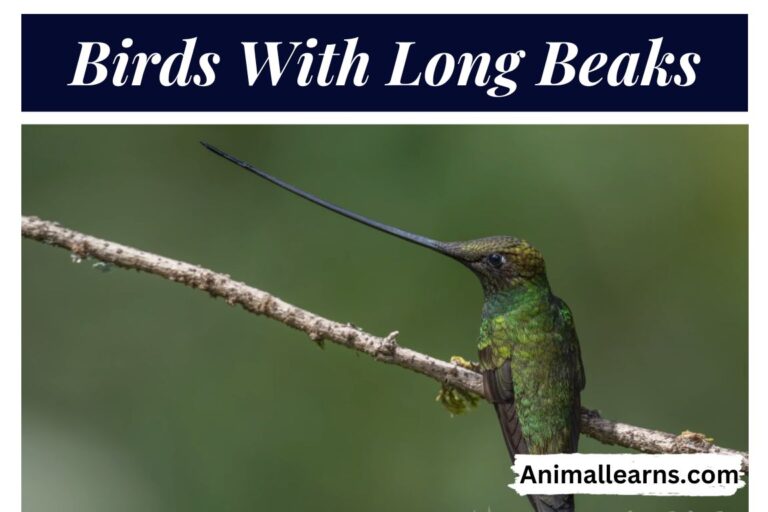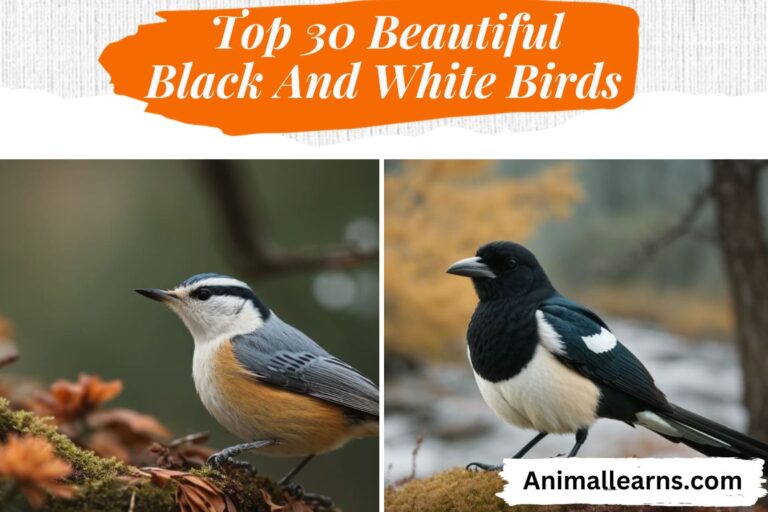15 Beautiful Purple Birds: Nature’s Colorful Wonders
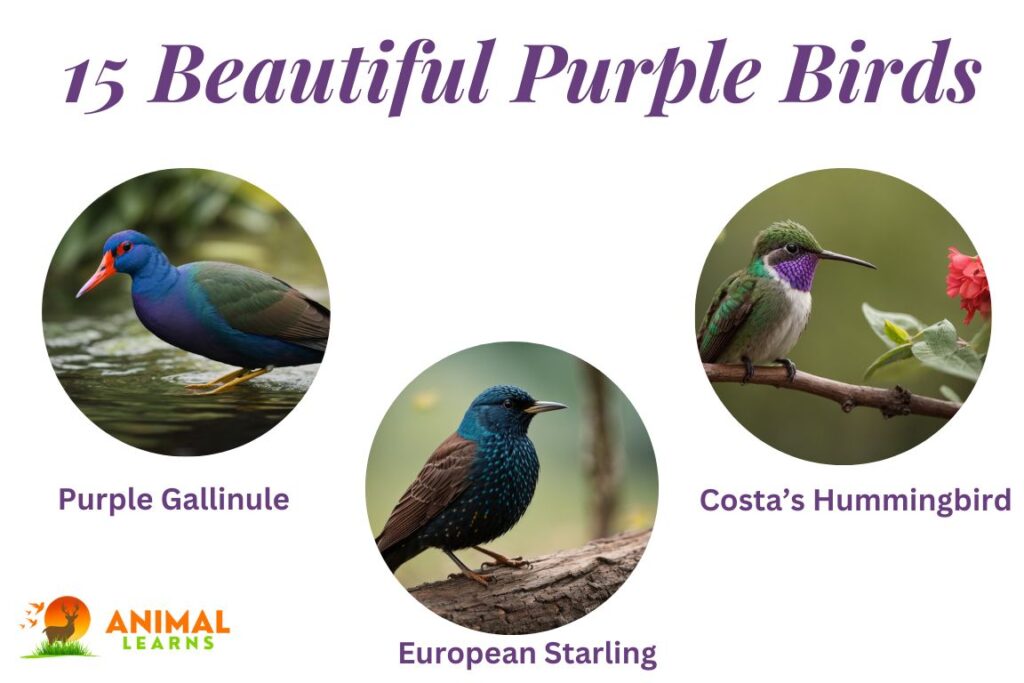
Purple birds are not known for their plumage but also for being a rare sight, in the animal kingdom. Their vibrant feathers create a spectacle, unlike the feathers of other avian creatures.
One of the rarest plumage hues found in birds is purple. But there are a few fortunate purple beauties. Only a few species, though, are completely vivid purple. For example, most birds that are partly purple have purple spots or seem to iridize in the sunlight.
Although purple birds can be found worldwide they are less common compared to their white and black counterparts. Male birds have plumage, which is a common trait among many species as it helps them attract mates.
Purple Birds
Contents
- 1 Purple Birds
- 1.1 European Starling
- 1.2 Purple Martin
- 1.3 Purple-Breasted Cotinga
- 1.4 Violet-Backed Starling
- 1.5 Purple Honeycreeper
- 1.6 Purple Grenadier
- 1.7 Purple Gallinule
- 1.8 Varied Bunting
- 1.9 Costa’s Hummingbird
- 1.10 Splendid Sunbird
- 1.11 Purplish Jay
- 1.12 Violaceous Jay
- 1.13 Japanese Paradise-Flycatcher
- 1.14 Purple-crowned Fairywren
- 1.15 Purple-backed Thornbill
- 2 Unveiling the Mystery of Purple Birds: Fact or Fiction?
- 3 FAQs
| Column 1 | Column 2 |
| 1. European Starling | 11. Purplish Jay |
| 2. Purple Martin | 12. Violaceous Jay |
| 3. Purple-Breasted Cotinga | 13. Japanese Paradise-Flycatcher |
| 4. Violet-Backed Starling | 14. Purple-crowned Fairywren |
| 5. Purple Honeycreeper | 15. Purple-backed Thornbill |
| 6. Purple Grenadier | |
| 7. Purple Gallinule | |
| 8. Varied Bunting | |
| 9. Costa’s Hummingbird | |
| 10. Splendid Sunbird |
These beautiful purple birds come in various shapes and sizes, each possessing unique traits that set them apart. From the small and delicate to the large and majestic, the avian world offers a diverse selection of purple bird breeds. Nature’s vibrant tapestry is enhanced by magnificent owls and purple-hued feathered companions which adorn the skies with their enchanting presence
Whether you’re a seasoned birdwatcher or a novice, exploring the types of purple birds and their distinct characteristics can be a truly enriching experience. Among the notable purple birds are those with orange chests, red chests, yellow beaks, and white chests, showcasing the spectrum of colors and patterns in their plumage.
Whether they have long tails, distinctive head markings, or even big teeth-like features, these birds never fail to amaze with their stunning appearances.
European Starling
| Attribute | Information |
| Scientific Name | Sturnus vulgaris |
| Size | About 20 cm (8 inches) |
| Weight | 70-100 grams (2.5-3.5 ounces) |
| Length | 19-23 cm (7.5-9 inches) |
| Location | Europe, North America |
| Lifespan | 2-15 years |
Originally from Europe, the European Starling has been introduced into North America where it has become a common sight. It is scientifically called Sturnus vulgaris. In addition to their iridescent plumage, these birds have a remarkable ability to perform aerial displays in synchronized flocks, known as murmurations.
Insects, fruits, and grains are among the foods eaten by European Starlings. In the field of ornithology, they are fascinating to study due to their adaptability and behavior.
Purple Martin
| Attribute | Information |
| Scientific Name | Progne subis |
| Size | 20-22 cm (8-9 inches) |
| Weight | 45-60 grams (1.6-2.1 ounces) |
| Length | 19-21 cm (7.5-8.3 inches) |
| Location | North and South America |
| Lifespan | 7-8 years |
Known for its vibrant purple-blue plumage and strong association with humans, the Purple Martin, or Progne suis, is a captivating North American bird. These birds are cavity nesters, often relying on artificial nest boxes provided by enthusiasts. As aerial insectivores, Purple Martins help control pests naturally.
They migrate to South America for winter and return to North America for breeding. Conservation efforts are becoming increasingly concerned with their reliance on nesting structures and migration patterns created by humans.
Purple-Breasted Cotinga
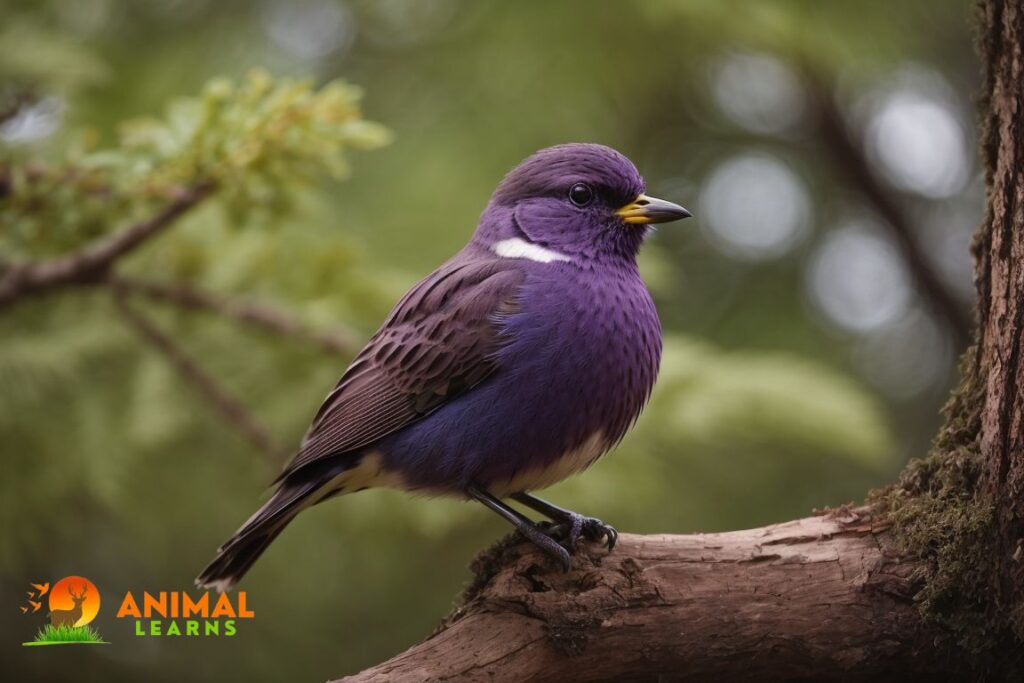
| Attribute | Information |
| Scientific Name | Cotinga cotinga |
| Size | 19-21 cm (7.5-8.3 inches) |
| Weight | Approximately 50 grams |
| Length | 19-21 cm (7.5-8.3 inches) |
| Location | South America (Amazon Basin) |
| Lifespan | Information not available |
Located in Central and South America, the Purple-Breasted Cotinga is a striking bird. The vivid purple plumage of this bird, particularly in the breast area, makes it one of the most beautiful bird species on the planet.
It prefers to feed on fruit in lowland tropical forests. Because of habitat loss and fragmentation, Purple-Breasted Cotinga populations face conservation challenges, which underscores the importance of protecting them.
Violet-Backed Starling
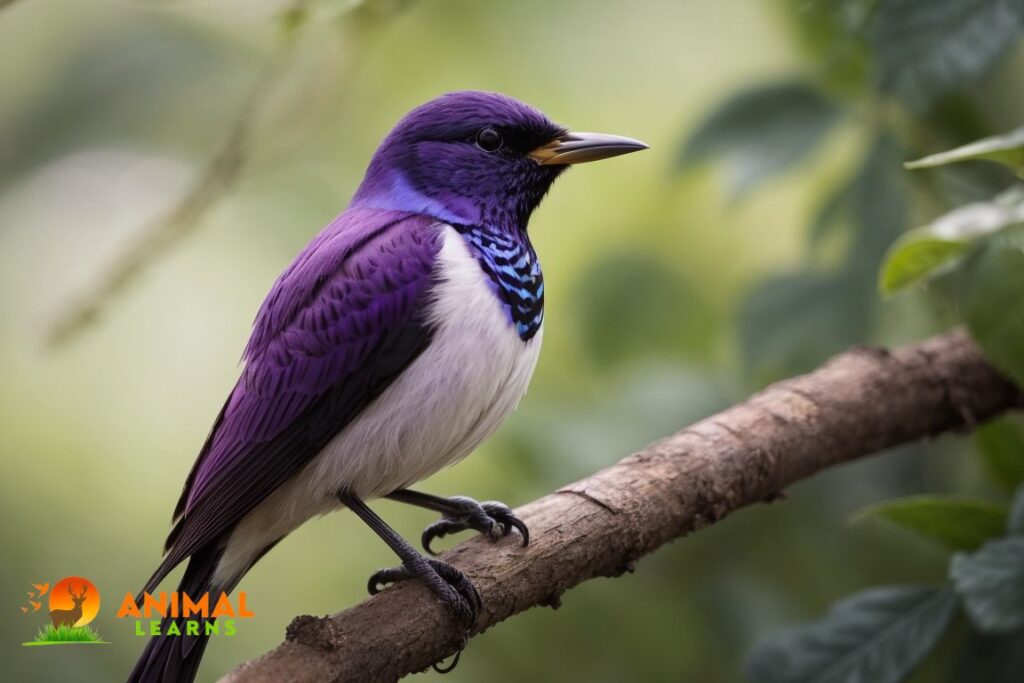
| Attribute | Information |
| Scientific Name | Cinnyricinclus leucogaster |
| Size | 17-20 cm (6.7-7.9 inches) |
| Weight | 50-60 grams (1.8-2.1 ounces) |
| Length | 17-20 cm (6.7-7.9 inches) |
| Location | Sub-Saharan Africa |
| Lifespan | Up to 7 years |
This iridescent violet-blue starling, Cinnyricinclus leucogaster, hails from the African continent. Its metallic plumage and iridescent violet-blue back set it apart from the rest of the bird. Invertebrates are the primary food source for these starlings.
African ecosystems benefit from their presence by controlling insect populations and spreading plant seeds. They are known for their vocalizations and social behavior.
Purple Honeycreeper
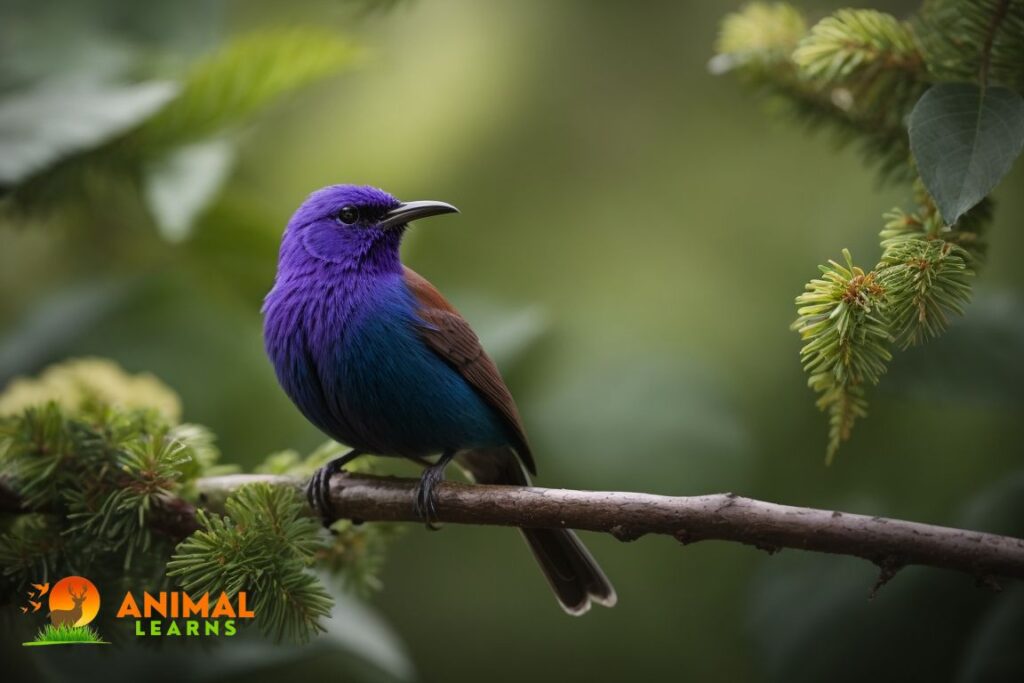
| Attribute | Information |
| Scientific Name | Cyanerpes caeruleus |
| Size | 11-12 cm (4.3-4.7 inches) |
| Weight | 8-12 grams (0.3-0.4 ounces) |
| Length | 11-12 cm (4.3-4.7 inches) |
| Location | Central and South America |
A tiny neotropical bird, the Purple Honeycreeper, is known for its vibrant purple-blue plumage. Its beaks are specially adapted to sip nectar from flowers and are vital pollinators of plants in Central and South America.
Climate change and habitat destruction pose threats to their survival, highlighting the need for conservation measures.
Purple Grenadier

| Attribute | Information |
| Scientific Name | Uraeginthus ianthinogaster |
| Size | 12-13 cm (4.7-5.1 inches) |
| Weight | Approximately 12 grams |
| Length | 12-13 cm (4.7-5.1 inches) |
| Location | Central and East Africa |
In addition to having stunning plumage that includes shades of purple and blue, the Purple Grenadier, Uraeginthus ianthinogaster, is also a captivating African finch. This bird is a granivorous species, primarily consuming seeds.
The birds often form small flocks and are popular among poultry enthusiasts. They are particularly fascinating to bird enthusiasts as well as researchers because of their striking appearance.
Purple Gallinule
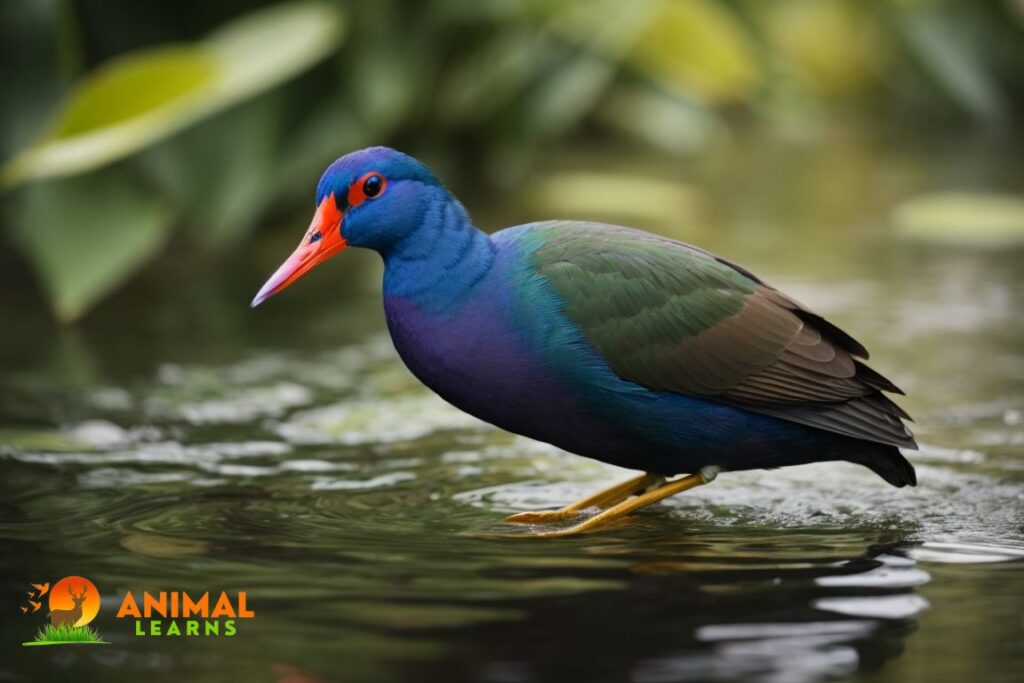
| Attribute | Information |
| Scientific Name | Porphyrio martinicus |
| Size | 26-33 cm (10-13 inches) |
| Weight | 190-350 grams (6.7-12.3 oz) |
| Length | 26-33 cm (10-13 inches) |
| Location | North and South America |
| Lifespan | Up to 7 years |
In the Americas, these birds inhabit marshes and swamps with their vivid plumage and long legs, known as the Purple Gallinule, and Porphyrio martinica.
Purple Gallinules are skilled swimmers and contribute significantly to the wetland ecosystems where they live by consuming aquatic plants, insects, and small vertebrates.
Varied Bunting

| Attribute | Information |
| Scientific Name | Passerina versicolor |
| Size | 11-12 cm (4.3-4.7 inches) |
| Weight | 12-15 grams (0.4-0.5 ounces) |
| Length | 11-12 cm (4.3-4.7 inches) |
| Location | North America (Western U.S.) |
Known as the Varied Bunting, Passerina versicolor, this bird flies in vivid blue, red, and white plumage. They are granivorous, often foraging on the ground for seeds.
The distinctive song and courtship display of these buntings make them a favorite among ornithologists and birdwatchers.
Costa’s Hummingbird
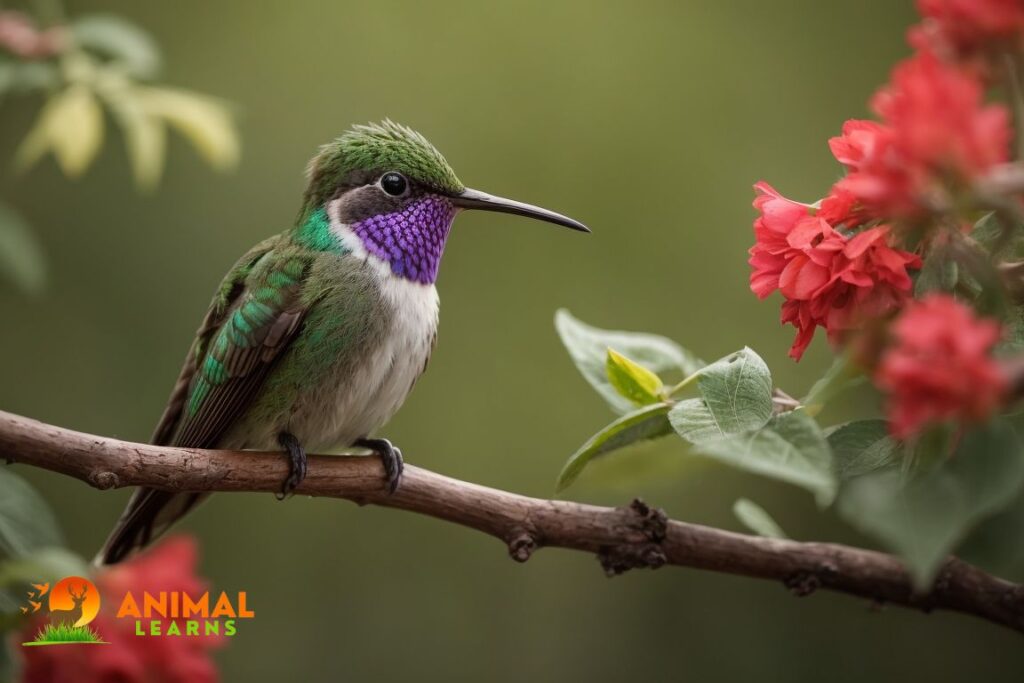
| Attribute | Information |
| Scientific Name | Calypte costae |
| Size | 8-9 cm (3.1-3.5 inches) |
| Weight | 2.9-3.7 grams (0.1-0.13 oz) |
| Length | 8-9 cm (3.1-3.5 inches) |
| Location | Southwestern United States |
| Lifespan | 3-5 years |
Calypte costae, Costa’s Hummingbird, is a small, striking species of hummingbird native to the southwestern United States and Baja California. Their iridescent purple-blue crown and throat make them stand out.
Due to their adaptations to arid environments and unique feeding behaviors, these birds are important pollinators of desert plants. They consume nectar primarily and are important pollinators of various desert plants.
Splendid Sunbird
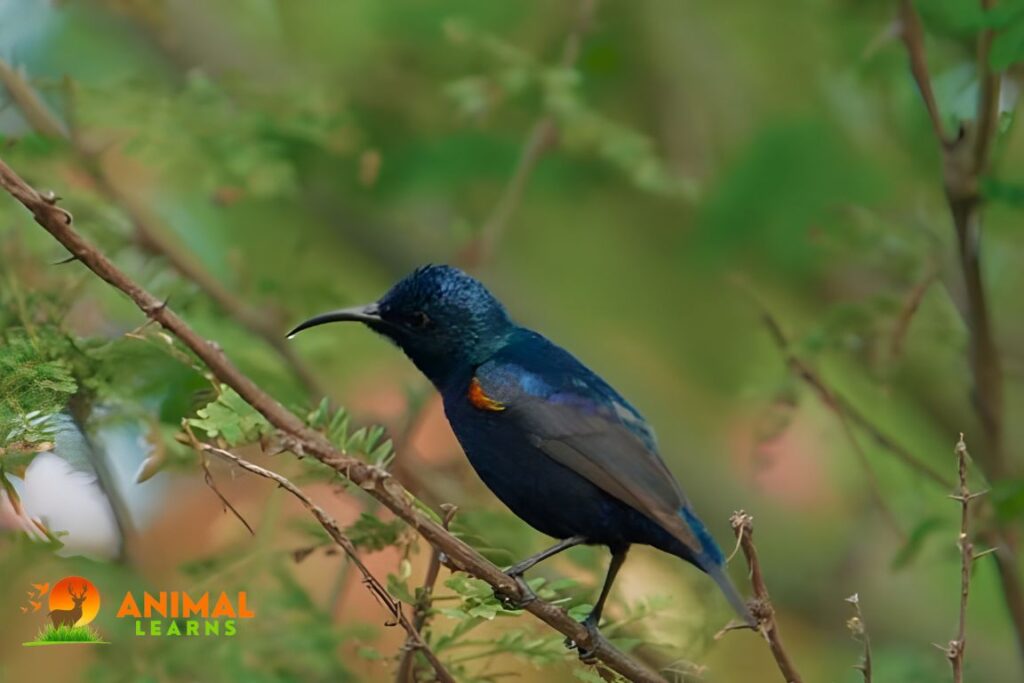
| Attribute | Information |
| Scientific Name | Cinnyris coccinigaster |
| Size | 12-13 cm (4.7-5.1 inches) |
| Weight | 8-14 grams (0.3-0.5 ounces) |
| Length | 12-13 cm (4.7-5.1 inches) |
| Location | Sub-Saharan Africa |
| Lifespan | Up to 6 years |
In eastern and southern Africa, the Splendid Sunbird, Cinnyris coccinigastrus, is a spectacular avian gem. Males have iridescent plumage, with shades of purple and green. As primarily nectar eaters and pollinators of flowering plants in their habitat, these sunbirds feed primarily on nectar.
A subject of fascination for naturalists and ornithologists alike, the Splendid Sunbird has intricate coloration and plays a critical role in the pollination of plants.
Purplish Jay
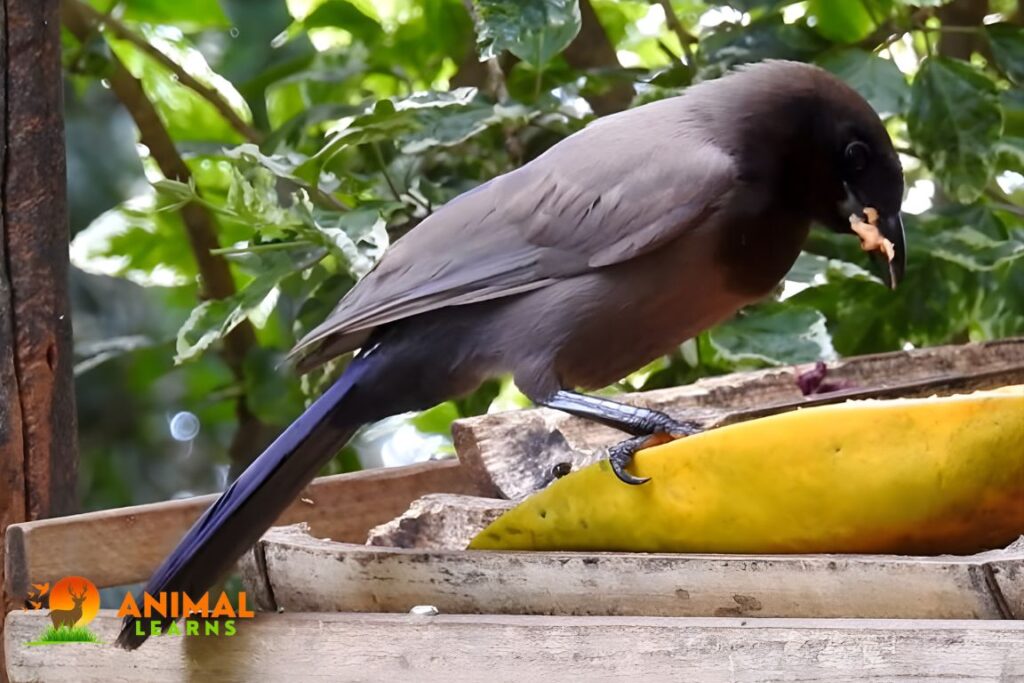
| Attribute | Information |
| Scientific Name | Cyanocorax cyanomelas |
| Size | 32-33 cm (12.6-13 inches) |
| Weight | Approximately 200 grams |
| Length | 32-33 cm (12.6-13 inches) |
| Location | Central and South America |
Jay’s large, dark head is darker than its body and has a deep purple-blue hue. A species like this prefers the mid-levels and the canopy of raised and open forests. It overlaps with the Violaceous Jay in strident communities.
As one of the most striking avians of Central and South America, the Purplish Jay can be seen inhabiting lush woodlands. Known for its deep purple and rich blue plumage, it has an ornate appearance. It eats fruits, insects, and small vertebrates, as part of its omnivorous diet.
This intelligent bird is known for its intricate vocalizations and its remarkable ability to mimic, which adds an element of intrigue to the biodiversity of its native habitats.
Violaceous Jay

| Attribute | Information |
| Scientific Name | Cyanocorax violaceus |
| Size | 30-34 cm (11.8-13.4 inches) |
| Weight | 180-250 grams (6.3-8.8 oz) |
| Length | 30-34 cm (11.8-13.4 inches) |
| Location | Central and South America |
Ornithologists and nature enthusiasts alike are intrigued by the Violaceous Jay, a fascinating bird of Central and South America. A highly social bird, these highly social birds thrive in a variety of habitats, from tropical forests to open woodlands.
Their iridescent plumage shimmers in various shades of violet and blue. With their raucous calls, they exemplify the rich diversity of avian life across their range and play an important role in seed dispersal within their ecosystems.
Japanese Paradise-Flycatcher

| Attribute | Information |
| Scientific Name | Terpsiphone atrocaudata |
| Size | 18-20 cm (7-8 inches) |
| Weight | Approximately 20 grams |
| Length | 18-20 cm (7-8 inches) |
| Location | Japan, Southeast Asia |
Among all the creatures of the Asian forest, the Japanese Paradise-Flycatcher enchants with its graceful presence. In stark contrast to many of its vibrantly colored avian counterparts, its delicate plumage features shades of white and pastel hues.
It is renowned for its long tail feathers and aerial acrobatics as it pursues insects in the forest canopy. They are a celebrated symbol of the region, and their seasonal migrations herald the change of the seasons.
Purple-crowned Fairywren
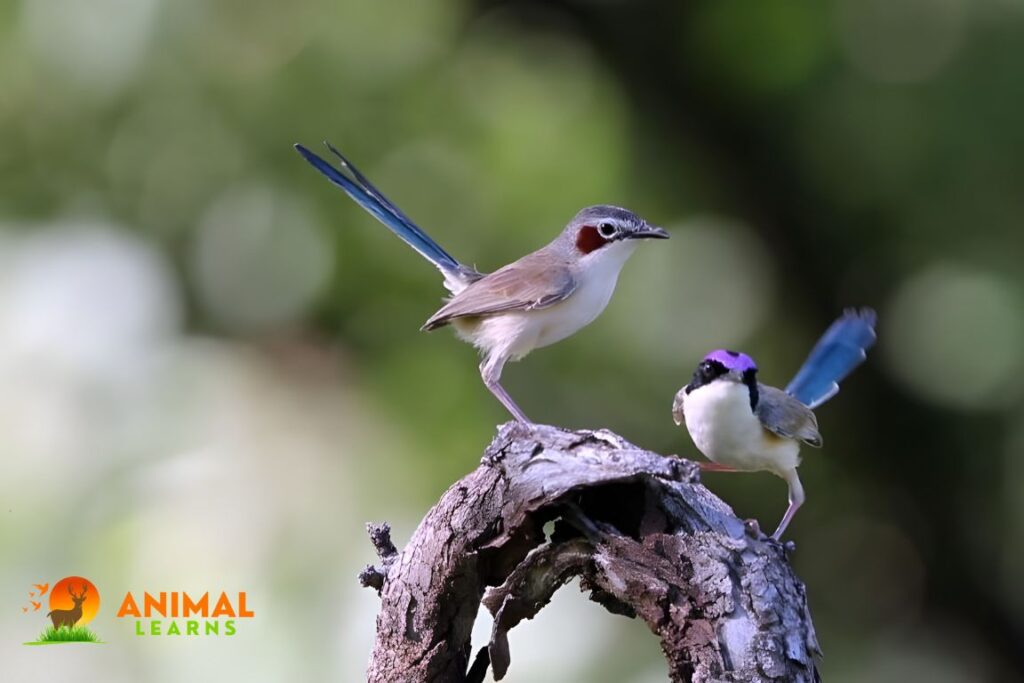
| Attribute | Information |
| Scientific Name | Malurus coronatus |
| Size | 14-16 cm (5.5-6.3 inches) |
| Weight | 8-12 grams (0.3-0.4 ounces) |
| Length | 14-16 cm (5.5-6.3 inches) |
| Location | Australia |
| Lifespan | Up to 7 years |
In addition to being a testament to nature’s artistry, the Purple-crowned Fairywren is also endemic to Australia. While the male displays vibrant purple crowns and deep blue plumage, the female displays a muted color palette, demonstrating sexual dimorphism in avian species.
Foraging for insects and small invertebrates in the dense underbrush of their habitat, these small birds traverse the dense underbrush with extraordinary agility.
Purple-backed Thornbill
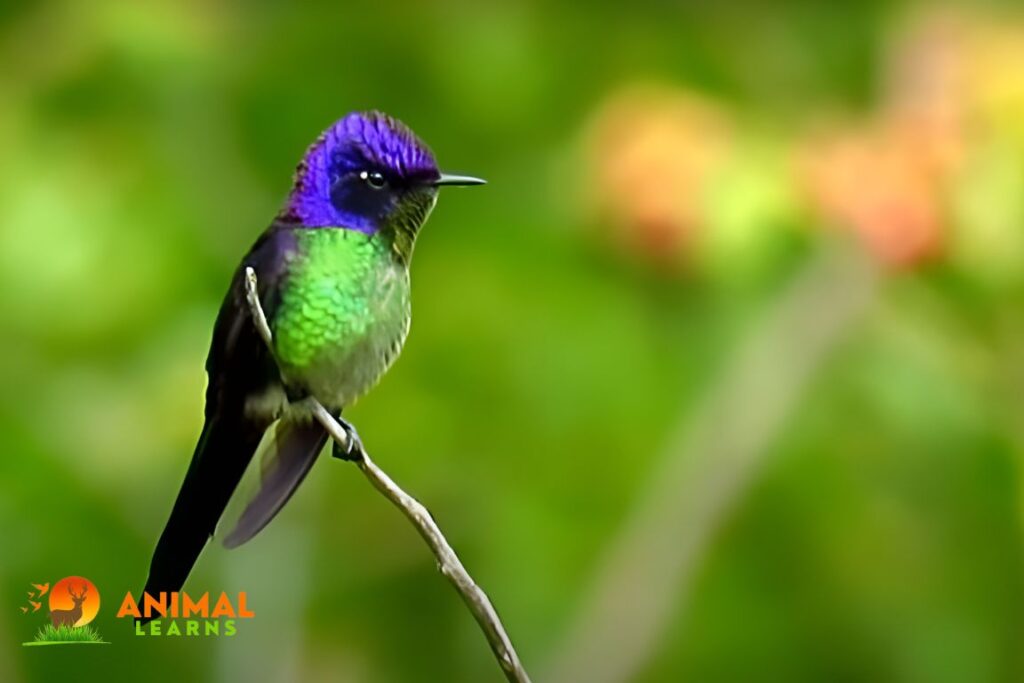
| Attribute | Information |
| Scientific Name | Ramsayornis modestus |
| Size | 9-11 cm (3.5-4.3 inches) |
| Weight | Approximately 9 grams |
| Length | 9-11 cm (3.5-4.3 inches) |
| Location | New Guinea, Australia |
There is no other hummingbird in the family Trochilidae with a smaller bill than the Purple-backed Thornbill. Males in this species have purple feathers on their backs, a white spot behind the eye, iridescent green feathers on their throats, and dark purple feathers on their tails that form a deep forked tail.
The tail feathers of female purple-backed thornbills are less deeply forked than those of males, and they have green feathers on their backs and a white spot behind their eyes.
This bird is found in tropical and subtropical montane forests throughout Bolivia, Colombia, Ecuador, Venezuela, and Peru, and it does not migrate out of those forests.
As with other hummingbird species, purple-backed thornbills feed on nectar and catch insects from flower petals.
Unveiling the Mystery of Purple Birds: Fact or Fiction?
The existence of purple birds has been a subject of curiosity and debate among enthusiasts and researchers. Many wonder, “Do purple birds exist?” While various bird species exhibit shades of purple in their plumage, the presence of entirely purple birds remains a topic of intrigue.
Some regions, such as Arkansas, Pennsylvania, Georgia, California, North Carolina, Illinois, and Maine, have reported sightings of purple birds, adding to the mystery. Additionally, regions like Ontario have their own share of purple bird species. However, the question of whether these birds are real or a product of optical illusion persists.
Furthermore, the color of bird droppings raises questions, with some pondering, “Why are birds pooping purple?” Delving into the realm of these captivating creatures and their existence provides a captivating journey into the world of ornithology and avian exploration.
FAQs
What is the most common purple bird species?
The most common purple bird species is the European Starling (Sturnus vulgaris).
Do all purple birds have vibrant plumage?
No, not all purple birds have vibrant plumage. Some have more muted or iridescent shades of purple.
Where can I find purple birds in the wild?
Purple birds can be found in various regions around the world, including Europe, North and South America, Africa, and Australia.
Are purple birds endangered or protected species?
The conservation status of purple birds varies by species. Some are protected or endangered, while others are of least concern.
What do purple birds eat?
Purple birds have diverse diets, including insects, fruits, nectar, and seeds, depending on their species and habitat.




